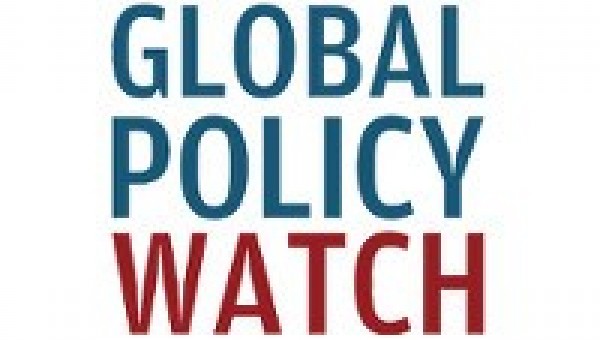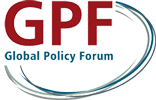News

The 48th session of the UN Statistical Commission takes place at the United Nations Headquarters in New York from 7-10 March 2017. Thus far, there are 36 reports for the Commission to consider, 85 side events, an exhibition planned to celebrate the 70 years of work of the Commission, with presentations from the UN World Data Forum.
News about the 48th Statistical Commission was presented at a recent briefing for CSOs by the UN DESA Statistics Division, including elements of a probable draft resolution from the Commission to ECOSOC on the SDG global indicator framework. The draft has been prepared and circulated to Member States by the co-Chairs of the IAEG-SDGs (Mexico and Philippines) and co-Chair of the High-Level Group for partnership, coordination and capacity-building for statistics (Hungary). It covers three major points:
- adoption of the December 2016 indicator framework
- capacity building
- data flow and role of international organizations.
Resolutions from the Commission are not common, Stefan Schweinfest, Director of the UN Statistics Division pointed out, noting that there have only been 4 resolutions in the lifetime of the Commission. Schweinfest added that the approval process is likely to be fairly pro forma, as with 193 countries, there is little room for informals. The resolution is likely to be adopted 7 March 2017, and sent to ECOSOC for consideration as called for in paragraph 75 of the 2030 Agenda for Sustainable Development (A/RES/70/1).
With regard to the draft, three issues were discussed. The first is that there is no explicit mention of CSOs or CSO engagement in the draft. The second is that draft resolution contains language indicating that National Statistical Offices (NSOs) may “explore new sources”, which could, if not redlined during the circulation of the draft, offer an avenue for outside stakeholder contributions and non-official statistics. The third is that quality standards and calculation methods for international data comparability are not necessarily understood or recognized by countries. Although, these were codified in 2006 (ECOSOC 2006/6), the draft could give some room to update and better organize methods of data flow. Schweinfest noted that “if there is a resolution, this could give a role to UN and non-UN international organizations that are trying to support the process globally”.
Katherine Kline, with the NGO Stakeholder Group on Aging pointed out from the floor that it would be helpful if the Statistical Division could post a template for CSO submissions, since lack of comparability is most often the reason given for failing to consider CSO inputs. While not immediately taking this on board, Schweinfest did note that the Working Group on Big Data is working on standard contracts for private sector partners, designed in part to harmonize an approach.
Schweinfest added, in response to a later question that the officers of the Commission, or the Bureau, would “take up the issue of a stakeholder engagement mechanisms next year”.
Since the Mexico City meeting, the IAEG-SDGs modified the tier classification for 25 indicators, downgrading 13 from Tier I to Tier II based on inadequate data availability, upgrading 1 from Tier II to Tier I as there is broad data coverage; downgrading 6 from Tier II to Tier III as there is no established methodology and upgrading 5 from Tier III to Tier II as a methodology has been agreed. They also highlighted an additional 13 indicators as undergoing possible refinement, adding that “the tier classification of many indicators will change in the coming years, as methodologies are developed and data availability increases”.
As of 21 December 2016: The updated tier classification contains 83 Tier I indicators, 59 Tier II indicators and 83 Tier III indicators. In addition to these, there are 5 indicators that have multiple tiers (different components of the indicator are classified into different tiers) indicating agreement on methodology and feasibility, and requiring only greater coverage, and which are still being worked out.
The work on indicators is ongoing process, the framework will be updated and submitted to Statistical Commission in 2020 and again in 2025. With regard to additional indicators, the IAEG-SDGs will finalize a list of proposed additional indicators to be presented to the Statistical Commission at its forty-ninth session, in March 2018. In addition, a background document for the Commission on work plans on the indicators notes that “the work plans for some Tier III indicators are missing, as some remain without a custodian agency while for others, a work plan has yet to be submitted by the custodian agency”. Among these is under target 17.13 to “enhance global macroeconomic stability, including through policy coordination and policy coherence”, for which the proposed indicator is the World Bank’s Macroeconomic Dashboard, which is of concern to many CSOs.
Tuesday, 7 March, the opening day of the 48th session, is when NSOs will report back on the SDG global indicator framework and the session will be webcast on webtv.un.org. Representatives of CSOs wishing to attend the 48th session of the Commission can register themselves or their delegations by emailing the Secretary of the Commission, Ms. Sangeeta Sharma <sharma7@un.org> (c/o Victor Leu <leu@un.org>).
More information on the 48th United Nations Statistical Commission can be found on the Commission’s website (https://unstats.un.org/unsd/statcom/48th-session/). Tier classifications can be found at (https://unstats.un.org/sdgs/files/meetings/iaeg-sdgs-meeting-04/Tier%20Classification%20of%20SDG%20Indicators_21%20Dec%20for%20website.pdf). More on the work of the IAEG-SDGs and High-Level Group for partnership, coordination and capacity-building for statistics can be found at (https://unstats.un.org/sdgs/iaeg-sdgs/).
